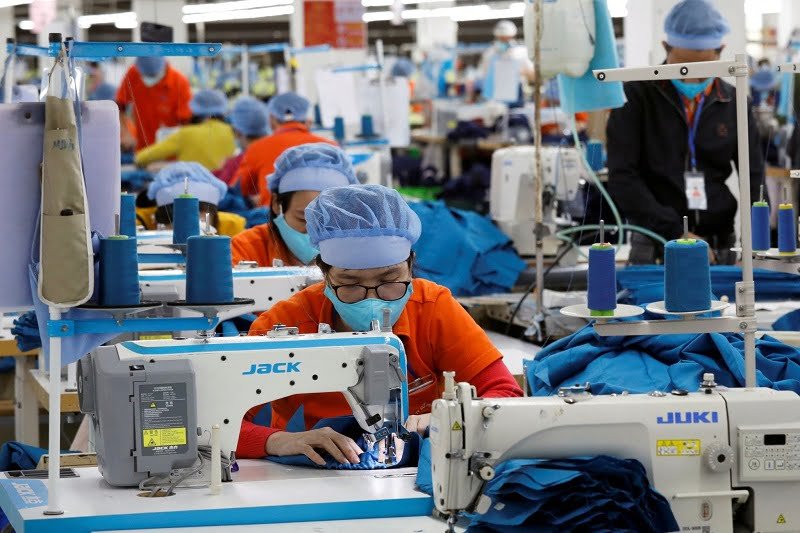At the top end of the spectrum, countries like Australia, Luxembourg, Netherlands, and Belgium offer some of the highest minimum wages globally. Conversely, countries like India, Ukraine, Vietnam, Nigeria pay some of the lowest minimum wage in the world.
Minimum wage policies stand as fundamental pillars shaping the livelihoods of millions of workers worldwide. The minimum wage, a statutory safeguard, ensures that individuals receive compensation reflective of their labor contributions and affords them a dignified standard of living.
However, in different countries, there are big differences in how much workers are paid as a minimum. Some countries have really high minimum wages, which means workers there get good pay and strong legal rights. But on the other hand, some countries have really low minimum wages, which makes it tough for workers to earn enough to live comfortably.
As we embark on our exploration of minimum wage standards worldwide, it’s imperative to establish a firm understanding of what minimum wage entails.
READ ALSO: What Is Professional Services Automation and Why Do Businesses Need It?
Understanding Minimum Wage
According to the International Labour Organization (ILO), “Minimum wage has been defined as the minimum amount of remuneration that an employer is required to pay wage earners for the work performed during a given period, which cannot be reduced by collective agreement or an individual contract.”
Over 90 countries have accepted and implemented this minimum wage definition from the International Labour Organization.
Minimum wage is typically computed per hour or month but may occasionally appear at a per-day or per-week rate.
It was first implemented to address the exploitation of workers in sweatshops and has since then become a way to prevent exploitation and help lower-income families everywhere.
Not all countries have a minimum wage. However, most countries had introduced minimum wage legislation by the end of the 20th century.
The minimum wage policies and laws do not permit workers to accept jobs below the minimum wage because it can lead to economic challenges.
A worker has the legal right to report any company or government agency that pays below the minimum wage rates set by the government. Any worker who fails to do so is also guilty of violating labor laws.
With several factors such as inflation rates, population, and rates of employment and unemployment influencing a country’s minimum wage, this article presents some countries with the highest minimum wage as well as countries with the lowest minimum wage permitted by law.
Countries with the Highest Minimum Wage

Highest minimum wage and lowest minimum wage are more than just buzzwords; they represent the polar ends of a spectrum that profoundly impact the lives of millions worldwide.
While some countries pay higher minimum wages than others, far beyond the standard set by the ILO and setting the bar sky-high, other economically fragile and poor countries with fewer industries and job opportunities struggle to provide even the most basic sustenance for their workers and cannot meet the minimum wage standard set by the International Labor Organization.
Some consider job security, cost of living, climatic conditions, account relocation, medical benefits, and other factors. Usually, employers are expected to pay at least the minimum wage or slightly above it. The most important thing to note is that employers cannot pay below the minimum wage the government sets.
In no particular order, here is a list of some countries that offer the highest minimum wage in the world.
1. AUSTRALIA

According to the Fair Work Act, the national minimum wage in Australia as of July 2023 stands at $23.23 per hour or $882.80 per week. This $23.23 indicates the actual take-home pay and not gross income before taxation.
All employers in Australia must pay this minimum wage under the law or face legal action. Most Australian workers work based on an Award System, mainly determined by an employee’s industry, age, and location. Some awards with special pay rates allow employers
to make other pay arrangements.
It is important to note that the stated minimum wage applies only to Australian workers at least 21 years of age and not under any agreement or award. Australian workers under 16 earn at least $6.73 per hour.
2. LUXEMBOURG

Regarding Gross Domestic Product per capita, Luxembourg is among the wealthiest nations worldwide. It is a small country in Western Europe, with top industries including tourism, biotechnology, chemicals, cargo transportation, engineering, telecommunications, information technology, aluminum, glass, metals, steel, construction, real estate, banking, and financial services.
In 2024, the national minimum wage in Luxembourg remained fixed at €2,570.9 (equivalent to 2,785.09 US Dollars) taking into account 12 payments per year. This translates to 30,851 euros in total income.
As a result, the monthly national minimum wage increased by 62.7 Euros compared to 2.5% in the prior year. Workers have lost purchasing power in the past year despite the boost, as this increase is less than the CPI (Consumer Price Index) in 2023, which was 3.5%.
As of January 1, 2018, unskilled employees above 18 receive a minimum wage of €11.5525 per hour. This amount sums up to €1,998.59 per month. Skilled and professional employees within that age range enjoy a 20% increase in the minimum wage.
3. NETHERLANDS

Based on the United Nations World Happiness Report in 2022, the Netherlands is ranked the fifth-best country in the world. The government has an excellent public education system, universal primary healthcare, and infrastructure.
In 2024, the Netherlands, also known as Holland, a country renowned for its progressive policies and robust social welfare system, has its national minimum wage at €2,070.1 per month, which is 24,841 euros per year.
As a result, the national minimum wage has been raised by 75.1 Euros per month from the previous year, 3.76%. This increase is more significant than the CPI of 2023, which was 1.2%, so workers have gained buying power in the last year.
This commitment to fair pay is ingrained in Dutch culture, reflecting a societal ethos that values labor’s dignity and workers’ well-being. Beyond merely meeting basic needs, the Dutch minimum wage enables individuals to thrive and contribute meaningfully to society.
4. BELGIUM

In 2024, the Belgian government set its national minimum wage at €1,994.2 per month, which is 23,930 euros per year. Belgian employers are obliged to pay employers this amount or slightly above it. This is a very reasonable amount, especially in light of Belgium’s comparatively cheaper cost of living compared to other EU member states.
Consequently, the national minimum wage has been raised by 39.2 Euros per month from the previous year, 2.01%. This increase is greater than the CPI 2023, which was 1.4%, so workers have gained buying power in the last year.
5. GERMANY

Germany, one of the countries with the highest minimum wage and the powerhouse economy of the European Union, has a minimum wage of €2,054 per month. This minimum wage does not mean that Germans are stingy paymasters.
The amount is sufficient to allow any average worker to lead a decent life because the government provides many free benefits to all citizens.
Countries with the Lowest Minimum Wage

Infographic by picodi.com
Undoubtedly, Asia and Africa are the two world regions where minimum wage levels are the lowest. Having listed countries with the highest minimum wage payment in the world, Here is a list of some countries offering the lowest minimum wages around the world:
6. INDIA

Minimum wage in India is subject to the provisions of India’s Code on Wages Bill of 2019 and it maintains a minimum wage of INR 178 per day (equivalent to US$2.15), translating to around INR 5340 (approximately US$65) per month.
This new wage code prohibits employers from paying workers less than the stipulated minimum wage. Further, the central and state governments must revise and review minimum wages for at least five years.
Minimum wages in India vary depending on skill set, industry, type of job, and place of employment.
7. NIGERIA

Nigeria is one of the countries with the lowest minimum wage in the world. The minimum wage in Nigeria has been steady at NGN 30,000 since April 18, 2019.
However, the government announced in 2023 an additional #35,000 wage award, making the country’s minimum wage stand at US$76 (NGN 65,000) per month. This minimum wage is based on monthly income with an average of 8 working hours daily and five days weekly.
8. UKRAINE

In Ukraine, the National Minimum Wage data remains an active status in CEIC (a curator of the best and most relevant economic, industry and financial data, meant for economists and investment professionals to track and gain genuine insight into what is happening in their markets – with a particular focus on emerging economies) and is reported by the Verkhovna Rada of Ukraine.
According to Art. 50 of the Ukrainian Labour Code, full-time work cannot exceed 40 hours per week, and its minimum wage is at (UAH 6,700 Monthly), equivalent to US$175.02.
9. VIETNAM

Vietnam has two minimum wage systems: the Regional Minimum Wage and the Standard Monthly Minimum Wage.
Only public employees are entitled to the common monthly minimum pay of US$73 (VND 1,800,000).
The regional minimum wage for private workers varies by location and is between US$140 (VND 3,445,000) and US$202 (VND 4,960,800) monthly.
Vietnam is also one of the countries with the lowest minimum wage.
10. UZBEKISTAN

Uzbekistan’s monthly minimum wage is US$80 (UZS 980,000), one of the lowest minimum wage. It became valid on May 1, 2023, from 920000 UZS/Month in 2022.
Minimum Wages in Uzbekistan averaged 204614.00 UZS/Month from 1999 until 2023, reaching an all-time high of 980000.00 UZS/Month in 2023 and a record low of 1750.00 UZS/Month in 1999.
11. PHILIPPINES

The minimum wage in Philippines differs by region, ranging from US$6.10 (PHP 341) per day in the ARMM region to US$10.91 (PHP 610) per day in the National Capital Region, or about US$128 (PHP 7,161) to US$229 (PHP 12,810) per month.
Final Thoughts
The discussion surrounding minimum wage transcends mere economics; it speaks to our values and vision for a more equitable future. It is a litmus test of a nation’s commitment to social justice and human dignity.
As we navigate the disparities between countries with the highest and lowest minimum wage rates, we face the harsh realities millions of workers face worldwide. Through dialogue, advocacy, and concerted action, we can all aspire to a future where everyone can afford the respect and dignity they deserve.









